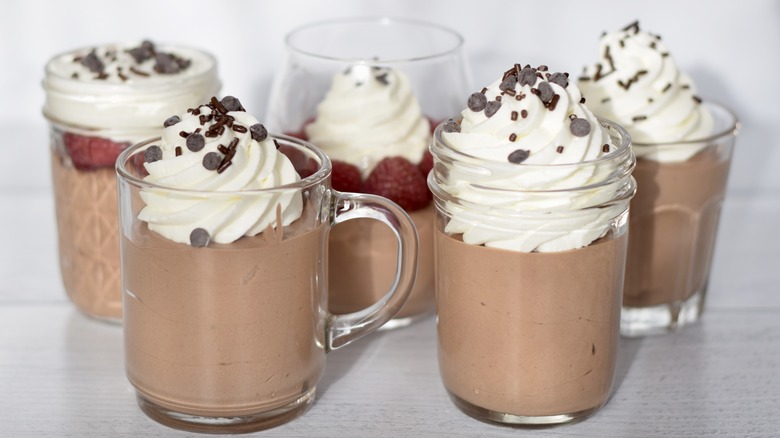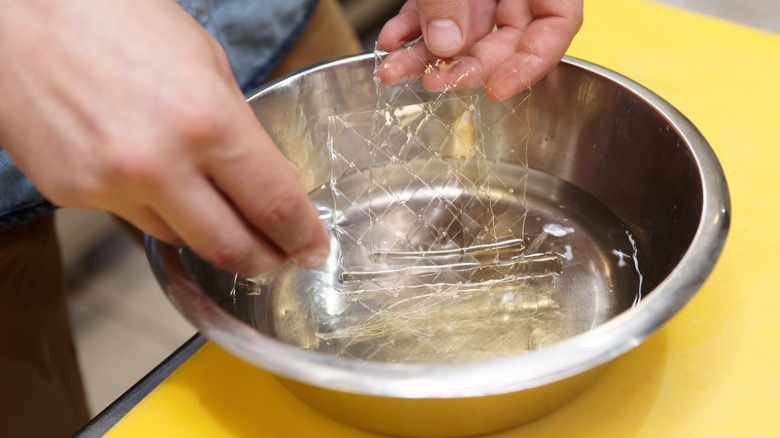Bloom Your Gelatin Properly – Your Chocolate Mousse Depends On It
Gelatin is a kitchen powerhouse. It thickens and enriches sauces and stocks, makes a kid's favorite wiggly snack, and can stabilize a variety of dishes. Getting any of those elements right depends on blooming your gelatin properly.
Gelatin usually comes in powders or sheets and needs to be bloomed before it can work its magic. Blooming means hydrating and activating the gelatin. It's sort of like proofing your yeast. Simply sprinkling a packet of gelatin or placing the gelatin sheet into your chocolate mousse mixture will result in a lumpy mixture, as the gelatin will just kind of clump together. Even worse, the mousse might not set. Blooming dissolves the powder or the sheet that then gets added to the mixture and combined. As it cools, it re-solidifies and firms up.
Successfully blooming gelatin for the perfect chocolate mousse depends on whether you're using powdered or sheet gelatin. You should use cool water to bloom gelatin sheets, which will help you avoid lumps. Let the sheets sit for five to 10 minutes, then gently wring them out without tearing them. Add to a warm base or dissolve gently over low heat before adding to a cold base. Gelatin powder needs to be bloomed in cold water. Sprinkle evenly over the top of a quarter cup of cold water and stir gently, then rest for up to 10 minutes. The water will absorb the gelatin and will look gummy. Add to a warm base and mix completely so the gelatin dissolves.
Gelatin is the Goldilocks of the culinary world
If your chocolate mousse doesn't set and you used gelatin, there might be a few issues at play. The most likely culprit is temperature — gelatin doesn't like it too hot. If your gelatin didn't bloom, the water you used might not have been cold enough. The water should be cool or cold. Conversely, if your chocolate mousse didn't set or is viscous but won't hold a shape, high heat might be to blame. The key is gently heating things and not going any higher or longer than is absolutely necessary. After 212 degrees Fahrenheit, gelatin basically becomes useless for desserts. Boiling gelatin or holding it at a high temperature for a longer period of time will weaken its ability to hold a shape. This is fine for restaurant pan sauces but not great for mini Jell-O parfaits or a classic panna cotta.
Keep an eye on time, too. Gelatin needs time to set, at the very least a solid eight hours in the refrigerator, optimally 24 hours. After 24 hours, gelatin won't set any further. If you need chocolate mousse tonight, you can hope for the best or run to the store for a backup dessert.

